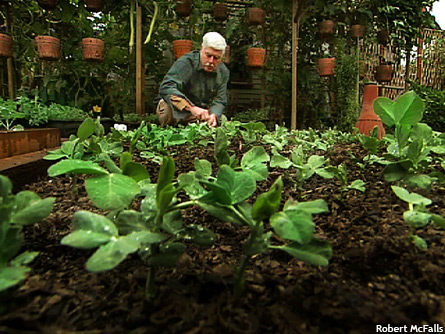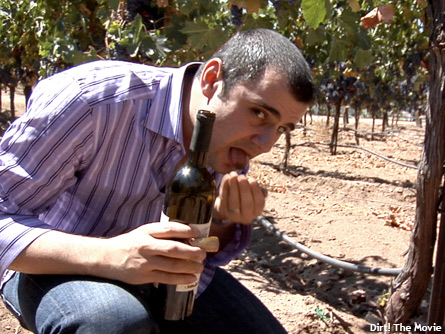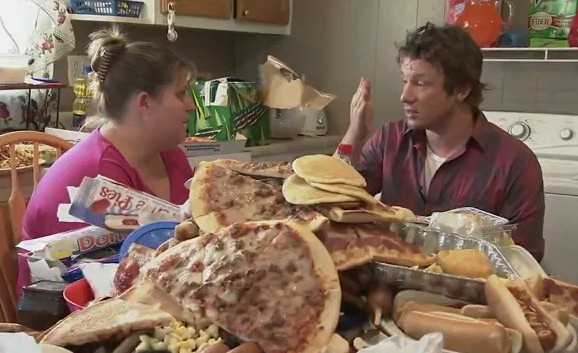 HomegrownSpring and the Environmental Film Festival both burst into full bloom at the festival’s start in the Nation’s Capital last weekend. Eco-movie buffs, many having withstood record snowfalls in Washington, D.C., this winter, eschewed the beauty of the outdoors to watch the beauty of the outdoors indoors in the form of a wellspring of eco-conscious cinema.
HomegrownSpring and the Environmental Film Festival both burst into full bloom at the festival’s start in the Nation’s Capital last weekend. Eco-movie buffs, many having withstood record snowfalls in Washington, D.C., this winter, eschewed the beauty of the outdoors to watch the beauty of the outdoors indoors in the form of a wellspring of eco-conscious cinema.
And there was a lot to see. In its 18th year, the festival, which ends Sunday, is in the midst of screening an ambitious 155 films over 12 days at some 56 venues around town. Not in freezing, old theaters in some overrun city in Utah, the Environmental Film Festival takes advantage of the great wealth of resources in the District of Columbia, including prime screening venues like The National Gallery of Art, American History Museum, seven different embassies, Georgetown University, and the National Museum of Natural History among many others.
Among the feast of food-themed films is a charming one called Homegrown.
It’s about a pioneering Pasadena, Calif., family who transformed their single-family home on a third of an acre into a micro farm. With eight chickens, two goats, four ducks, and producing around 6,000 pounds of food, the Dervaes family serves as a beacon of brilliance and can-do-it-iveness.
In addition to growing their own sustenance, the Dervaes family sells local, organic produce to Pasadena restaurants. They also run a website, where their journey to self-sufficiency is inspiring and also accessible.
This film shows the triumph and satisfaction of growing your own food, along with underscoring the community created by such audacious acts of turning your lawn into a farm. What begins as an oddity in the neighborhood becomes a community treasure, bringing people together.
After the film, the impulse to get your hands dirty is great—one felt even greater after attending a screening of a documentary film called Dirt! The Movie.
For such a strong word, something so, well, dirty, you wouldn’t expect homage of this order to exist. Never has a film created in a viewer such a visceral need to thrust one’s hand into the soil. This ode to dirt begins with the Big Bang. From that beginning, it takes us to another beginning narrative: God makes humankind from soil; he names the first person the Hebrew word for dirt, Adam. Eve is life.
Dirt links us to where we come from—stardust. And this film is full of stars. Narrated by Jamie Lee Curtis and featuring interviews with luminaries like Vandana Shiva, Wangari Maathai, Alice Waters, Majora Carter, and others, dirt remains the true star of this film.
The film illustrates the true importance of its subject. Based on the book by William Bryant Logan, Dirt: Ecstatic Skin of the Earth, it draws attention to the top six inches of soil as living and breathing and among the most vital parts of life as we know it.
 Dirt! The MovieIndustrial agriculture’s use of nitrogen fertilizers, pesticides, and monocultures are having devastating effects on the state of our dirt. We are doing something very dangerous to life itself: We are treating our dirt like dirt, an expression whose meaning should change to “treating something with great respect and care.”
Dirt! The MovieIndustrial agriculture’s use of nitrogen fertilizers, pesticides, and monocultures are having devastating effects on the state of our dirt. We are doing something very dangerous to life itself: We are treating our dirt like dirt, an expression whose meaning should change to “treating something with great respect and care.”
The filmmakers and dirt-matologists, Bill Benenson and Gene Rosow, have combined information, passion, compelling storytelling and humor in a rich way to cast a radiant light upon a not often thought about subject. Their animated personification of dirt in the film, Digby, is a source of adorableness and ample guffaws throughout a screening. Playing in the dirt makes the film something for children and adults.
Like a good environmental film, Dirt! aims to be more than a movie. It seeks to be a movement. It educates and encourages viewers to compost, buy from local agriculture producers and have relationships with them, and screen the film wherever they live to help more people get the dirt (the good kind) on dirt.
After screening at Sundance this year, the film will be aired nationwide on PBS. You can see it during Earth Day week on Tuesday, April 20.
After happily getting my nails dirty, I came up for air and light to see a film about the power of light itself and the politics that have slower solar power called A Road Not Taken, about Pres. Jimmy Carter’s solar panels.
In 1979, Pres. Carter installed the solar panels on the White House roof, at a time when the oil crisis and the Iran hostage crisis were making our relationship to oil seem all the more questionable. He asked us as a nation to look at our consumption and change.
 A Road Not TakenNot surprisingly, the panels were removed in 1986 by Pres. Reagan before making their way to Unity College in Maine in the early ’90s
A Road Not TakenNot surprisingly, the panels were removed in 1986 by Pres. Reagan before making their way to Unity College in Maine in the early ’90s
The filmmakers are two Swiss artists who were taken by the history and symbolism of the panels. The film journeys back in time to the installation of the panels, with well-placed archival footage and actual speeches by Pres. Carter. The young artists and students then take a road trip with the panels in tow to the American History Museum, trying to secure a rightful place there.
The panels were unfortunately rejected from the museum. Though, not to give away the ending, the film screened at the American History Museum—a sign that the sunshine machine was let in.
A funny, sad, weird, and illuminating film, it is worth a watch, as were so many others at the festival. These three movies just begin to scratch the surface of the embarrassment of environmental cinematic riches that the Environmental Film Festival has to offer.
By all means, take in the offerings yourself! If you’re in D.C. this weekend, you can check out the blossoms and some of the films before the festival ends. If you’re an out-of-towner, have a gander and find out where to watch the impressive list of films here.



